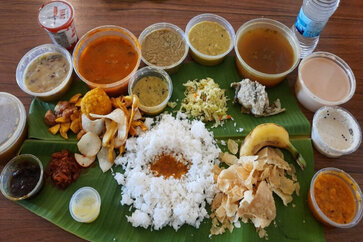What Is Ayurveda? The History Of Ayurveda
Ayurveda is a holistic system of medical science and is the oldest science of healing that is almost more than 5000 years old.
Ayurveda has two Sanskrit words ” Ayu” which means life or live life and “Veda” meaning knowledge of Science Life.
This system of medicine was formed in the ancient land of India. Hindus accept Vedas as Ayurveda a gift from the gods to humanity that was communicated to the saints and sages of India through deep meditation.
Veda Vyasa, one of the greatest sages of India is considered to have written the Vedas, for the first time. These closures have health issues and the use of herbs to cure various diseases.
How old is Ayurvedic?
Ayurveda is one of the oldest yet most modern and influential oriental medicines. The history of Ayurveda in India began in 1500 BC as the Hindu tradition.
Can be found in the Atharvaveda, one of the four ancient books of knowledge and indigenous culture, which speaks of more than 114 Ayurvedic treatments to cure a variety of ailments.
Due to its mention in ancient writings and often religion, Ayurveda is considered by many professionals as of divine origin. Ayurveda is used has increased for the treatment of various diseases and is divided into eight branches of medicine.
Atreya addition, the College of Physicians and Dhanvantri surgeons school-originated. The Chinese, Tibetans, Greeks, Romans, Egyptians, Afghanistan’s, and the Persians came to India to learn the Ayurvedic principles of healing and treatment.
Ayurvedic texts were translated into Arabic and these were used by physicians as Avicenna and Razi Sempione to establish Islamic medicine. Besides this, Ayurveda became popular in Europe, and that is the foundation of the European tradition in medicine.
Paracelsus, the father of modern Western medicine (1600) has also adopted Ayurveda (in the system of medicine that he practices).
What is Vedas?
The Vedas are considered the first literary record of Ind-Aryan civilization, and the sacred books of India. They are the original scriptures of Hindu teachings and contain spiritual knowledge encompassing all aspects of our lives.
Vedic literature with its philosophical maxims has stood the test of time and is the highest religious authority in all sectors of the Hindus in particular and humanity in general.
Types of Vedas
The four main Vedas Rig, Sama, Yajur, and Atharva Veda (Ayurveda means the science of life is a subsection of the Atharva Veda). At first, only the Brahmins learned the principle of healing and were considered doctors.
However, over time this changed and people of other castes also learned this art of healing, and the specific term Vaidya was brought into use for these professionals.
Veda was transmitted through the millennium through singing and writing. They were written in prose, in Sanskrit specific repetitive sounds called mantras, which are the sounds that incorporate the laws of vibration and energy of the universe.
What are the 4 Vedas?
- The Rig Veda: is the oldest of the four Vedic scriptures and contains the main concepts of Ayurveda. He speaks of three cosmic powers associated with the wind, fire, and earth, and how these primary forces are related to the three psycho-physiological constitutions of the man known as Vata, Pitta, and Kapha.
- The Yajur Veda: contains the Vedic rituals and practices that aim to improve health and longevity. It is in the writings of the Yajur Veda that the concept of organs and tissues (Dhatus) is introduced.
- The Sama Veda: contains songs musical is said to bring health, harmony, and well-being of body, mind, and soul. Ayurveda emphasizes the importance of mantra therapy, music, and sound for healing at the deepest level.
- The Atharva Veda: contains references to specific herbs, the treatment of certain diseases, and other systematic knowledge about Ayurveda and deals with man’s daily routine.
The other secondary texts of Vedas is known as the Upavedas contain other useful knowledge for healing.
Types of Upavedas Vedas
- Dhanur Veda: contains thorough knowledge of Marma points (acupuncture points on the body) to promote the healing of specific organs.
- Sthapatya Veda: showing the inherent healing forces and addresses the use of these in the construction of houses, temples, and hospitals. These forces called “Vastu” help create more healing prana (vital energy) in the right place.
- Gandharva Veda: shows how music and movement can heal the body and mind. Vedic music is used to balance and harmonize the elements within us, that change with the days and seasons.
Ayurveda is also connected to the six members or six limbs (Vedangas) of the Vedas:
The 6 Branches Of Vedas
- Jyotish (Vedic astrology)
- Kalpa (ritual Vedic)
- Shiksha (pronunciation)
- Vyakarana (Grammar)
- Nirukta (Etymology)
- Chandra (metric)
According to Ayurveda, Vedic astrology, rituals and mantras are very important in healing. In outlining the movement of our past, present, and future (karma), Vedic astrology is said to aid in the diagnosis of the disease, which shows that the disease is likely to occur and the resources for treatment and prognosis.


























